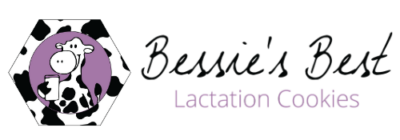
Breast milk. How does your body know to start producing it? How does your body know how much to make? How can food help?
Lactogenesis Stage One
Lactation begins with colostrum production around the 16th week of pregnancy. “Lactogenesis Stage One” lasts until a few days after baby is born. Lactogenesis, by the way, is the transition from pregnancy to lactation. The nutritional makeup of colostrum is exactly what your newborn needs and the amount produced is what their stomach can hold while your body transitions to mature milk. Remember, a newborn’s tummy holds only a teaspoon on day one).
Lactogenesis Stage Two
Because birth thrusts babies out of their nice warm quiet environment they can be quite grumpy. Sometimes this makes us worried about milk supply and can even lead to thoughts that our milk isn’t coming in. However the biology behind milk production shows that the two aren’t usually related. After labor is over and baby (and placenta) are delivered the hormone prolactin (which is how we produce milk) takes over because both estrogen and progesterone levels drop. The technical term for this is “Lactogenesis Stage Two” and starts two or three days after giving birth; baby’s tummy can hold about 3/4 to 1 oz by day three. More commonly this is referred to as milk “coming in” as this is when milk production intensifies. This can also be a period of engorgement to the point where breasts are sore, painful, or tender.
Lactogenesis Stage Three
Once baby is about 9 days old, when baby’s tummy holds about 1 1/2 to 2 oz, your body transitions to “Lactogenesis Stage Three”. This final stage continues until baby is weaned and milk is no longer removed from the breast.
Ongoing lactation is a supply-and-demand process. The more breast milk removed from the body the more signals the body receives to make more milk. I like to think of this as call-ahead ordering. Sometimes things affect supply like illness, stress, returning to work, and menstruation to name a few. During these times there are a lot of tools in our nursing toolbox we can try; power pumping, massaging breasts, hydration, nursing often pumping between sessions, offering both breasts every time, and lactation cookies containing galactagogues to name a few. Galactagogues are foods such as whole grains (especially oatmeal), dark, leafy greens (such as alfalfa, kale, spinach, and broccoli), fennel, garlic, chickpeas, nuts, and seeds (especially almonds), ginger, papaya, and spices like cumin seeds, anise seeds, fennel seeds, turmeric to just name few. Reading these foods one other thing stands out: Nutrition! All of these are also highly nutritious fuel for our bodies AND have a bonus because they can help increase your breast milk supply. Bessie’s Best treats are surely a win-win for both parent and baby.
Written by: Lyn Statler, Certified Lactation Counselor



Leave A Comment